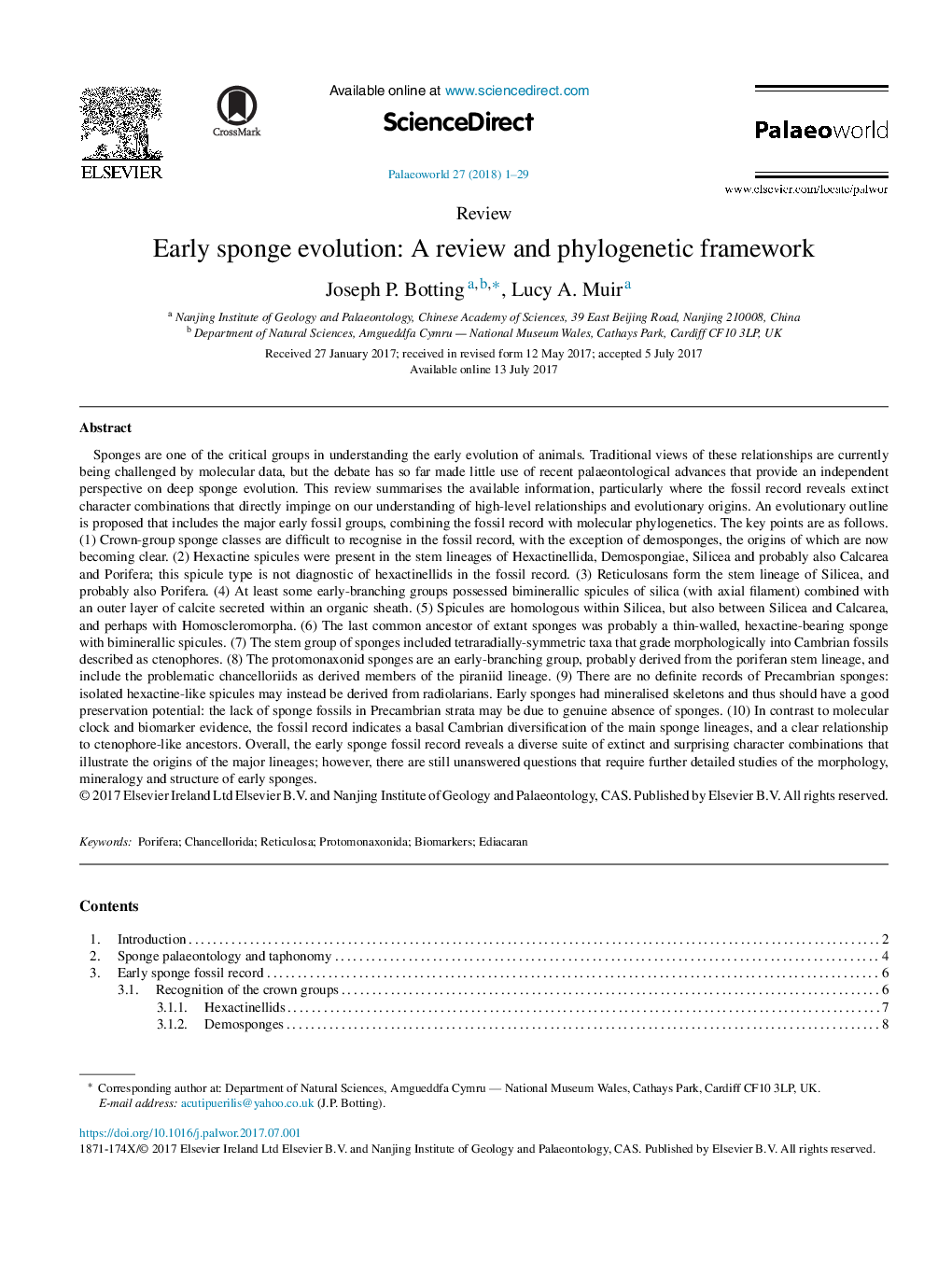| کد مقاله | کد نشریه | سال انتشار | مقاله انگلیسی | نسخه تمام متن |
|---|---|---|---|---|
| 8916553 | 1642272 | 2018 | 29 صفحه PDF | دانلود رایگان |
عنوان انگلیسی مقاله ISI
Early sponge evolution: A review and phylogenetic framework
ترجمه فارسی عنوان
تکامل اولیه اسفنج: چارچوب بررسی و فیلوژنتیک
دانلود مقاله + سفارش ترجمه
دانلود مقاله ISI انگلیسی
رایگان برای ایرانیان
موضوعات مرتبط
مهندسی و علوم پایه
علوم زمین و سیارات
فسیل شناسی
چکیده انگلیسی
Sponges are one of the critical groups in understanding the early evolution of animals. Traditional views of these relationships are currently being challenged by molecular data, but the debate has so far made little use of recent palaeontological advances that provide an independent perspective on deep sponge evolution. This review summarises the available information, particularly where the fossil record reveals extinct character combinations that directly impinge on our understanding of high-level relationships and evolutionary origins. An evolutionary outline is proposed that includes the major early fossil groups, combining the fossil record with molecular phylogenetics. The key points are as follows. (1) Crown-group sponge classes are difficult to recognise in the fossil record, with the exception of demosponges, the origins of which are now becoming clear. (2) Hexactine spicules were present in the stem lineages of Hexactinellida, Demospongiae, Silicea and probably also Calcarea and Porifera; this spicule type is not diagnostic of hexactinellids in the fossil record. (3) Reticulosans form the stem lineage of Silicea, and probably also Porifera. (4) At least some early-branching groups possessed biminerallic spicules of silica (with axial filament) combined with an outer layer of calcite secreted within an organic sheath. (5) Spicules are homologous within Silicea, but also between Silicea and Calcarea, and perhaps with Homoscleromorpha. (6) The last common ancestor of extant sponges was probably a thin-walled, hexactine-bearing sponge with biminerallic spicules. (7) The stem group of sponges included tetraradially-symmetric taxa that grade morphologically into Cambrian fossils described as ctenophores. (8) The protomonaxonid sponges are an early-branching group, probably derived from the poriferan stem lineage, and include the problematic chancelloriids as derived members of the piraniid lineage. (9) There are no definite records of Precambrian sponges: isolated hexactine-like spicules may instead be derived from radiolarians. Early sponges had mineralised skeletons and thus should have a good preservation potential: the lack of sponge fossils in Precambrian strata may be due to genuine absence of sponges. (10) In contrast to molecular clock and biomarker evidence, the fossil record indicates a basal Cambrian diversification of the main sponge lineages, and a clear relationship to ctenophore-like ancestors. Overall, the early sponge fossil record reveals a diverse suite of extinct and surprising character combinations that illustrate the origins of the major lineages; however, there are still unanswered questions that require further detailed studies of the morphology, mineralogy and structure of early sponges.
ناشر
Database: Elsevier - ScienceDirect (ساینس دایرکت)
Journal: Palaeoworld - Volume 27, Issue 1, March 2018, Pages 1-29
Journal: Palaeoworld - Volume 27, Issue 1, March 2018, Pages 1-29
نویسندگان
Joseph P. Botting, Lucy A. Muir,
